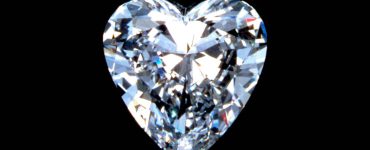To further the clarification of this laser tattoo removal procedure, the argon laser goes forth destroying the tissue through the mode of heating; emitting a directed blue or green constant laser beam. The skin that is containing the tattoos pigment purposefully takes-up this focused light. Therefore, the destruction of the pigmented tissue follows.
During the laser tattoo removal, the emitting light increases in heat, enabling the spread of that said heat away from the tattoo pigment granules. This goes toward the skin that is surrounding the tattoo itself. This destroys the tattoo, removing the design permanently. However, there is the potential to significantly damage the surrounding skin, with the resulting scar.
Laser Tattoo Removal – The Q-Switched lasers
The modern-day laser tattoo removal techniques are now using Q-switched lasers. A considered non-invasive laser treatment that goes forward creating the high-intensity pulsed light beam. These lasers are able to destroy the very tiny particles of the tattoo pigment.
This advanced technological procedure allows for a lessening of the contact with the surrounding skin and other tissues. Therefore, this laser tattoo removal treatment is appreciated for the lack of damage to the surrounding tissues. Creating less of the unwanted scarring and harmful side effects.
Currently, there are the three designs of the Q-Switch laser, this will include the:
- Nd: YAG, the infrared laser. The light is invisible to the eye and reacts with tissues similar to the ruby and alexandrite laser’s wavelengths
- Ruby, the first laser developed for the skin-therapies; removes dark tattoo pigments without the scarring
- Alexandrite lasers are capable of removing the blue and the black tattoo pigments; however, there is the ability to also remove the green tattoo pigments at a said better quality than any other laser.
These Q-Switch lasers are devices that are capable of producing very short-lasting laser beam pulses; in the more appropriate nanosecond range.
To clarify, within the examination studies, there has been the conclusion that the lasers that go forth and pulse within the more lengthened millisecond range, their use for the treatment of laser tattoo removal can result in heat damage to the treated area, resulting within the scaring of the tissues.
However, the more advanced Q-Switched laser beams, go forward pulsing and lasting a very brief billionth of a second.
These lasers are said to remove blue and black tattoo pigments at a high quality. However, the overall researched findings seem to suggest that the ruby had the most prominent clearance rate out of the three lasers.
However, with the Ruby, there is the believed potential for the highest percentage of hypopigmentation. This refers to the potential spots of skin that become lighter than your overall skin tone within the treated areas.
These laser tattoo removal procedures are currently the only method that has been proven to remove the tattoos without the unsightly result of scarring.
Tattooing is the process of what can be called the implantation of the permanent pigmented granules into the deeper layers of one’ skin.
Tattoos can obviously be decorative, medical, accidental, and even a form of identification.
However, with the removal of the tattoo, the Q-switched lasers have become the overall standard for removal. The potential for complications can still occur, yet only has an incidence of about 5%.
With the performance of the laser onto the skin, the energy absorbed by the pigment is turned into heat; this is called the photothermal effect.
The breakage of the chemical bonds within the pigment commences; creating the photochemical effects. The pigment loss is due to the small pigment particles that are then removed from the skin through the local blood vessels and the localized lymphatic vessels that return the extracellular fluids to the circulating blood.























